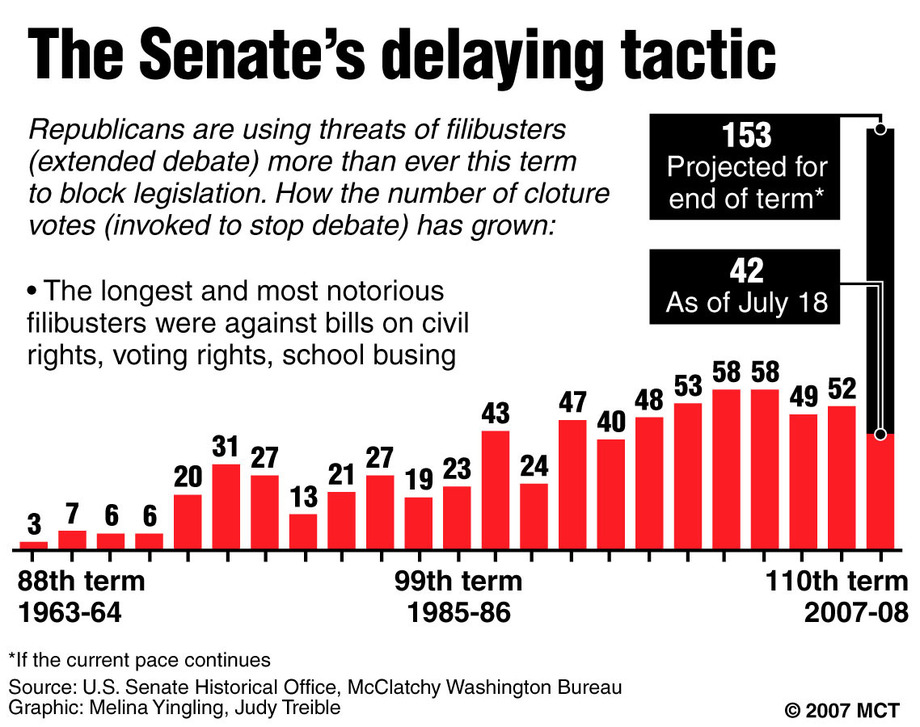Filibustering in the U.S. Senate (preventing a vote on a bill with continuous speech–or at least the threat of it, since often now a Senator just has to state that s/he intends to filibuster; if there aren’t 60 Senators to vote for cloture, they often just pretend the filibuster happened without making a person actually do it)–has been increasing over time:

Why? Greg Koger at the Monkey Cage has a fascinating explanation (via Matthew Yglesias):
So why did the Senate change? The stock answer is that the chamber’s responsibilities grew with the size and scope of the federal government, so it became more costly to sit around watching obstructionists kill time. There is some truth in that explanation. Also, however, senators’ work habits changed. The introduction of railroads, cars, and (especially) air travel made sitting around in the Senate chamber so…boring. Tedious. Totally lame. During the mid-20th century, the Senate increasingly became a Tuesday-Thursday club, and individual senators began insisting that major legislation be kept from the floor to accomodate their travel schedules. A serious attrition effort would mean cancelled speeches in Manhattan and Chicago, no trips to the Delaware coast, and waiting longer to return to the ranch back in Texas.
—————————
Lisa Wade is a professor of sociology at Occidental College. You can follow her on Twitter and Facebook.







